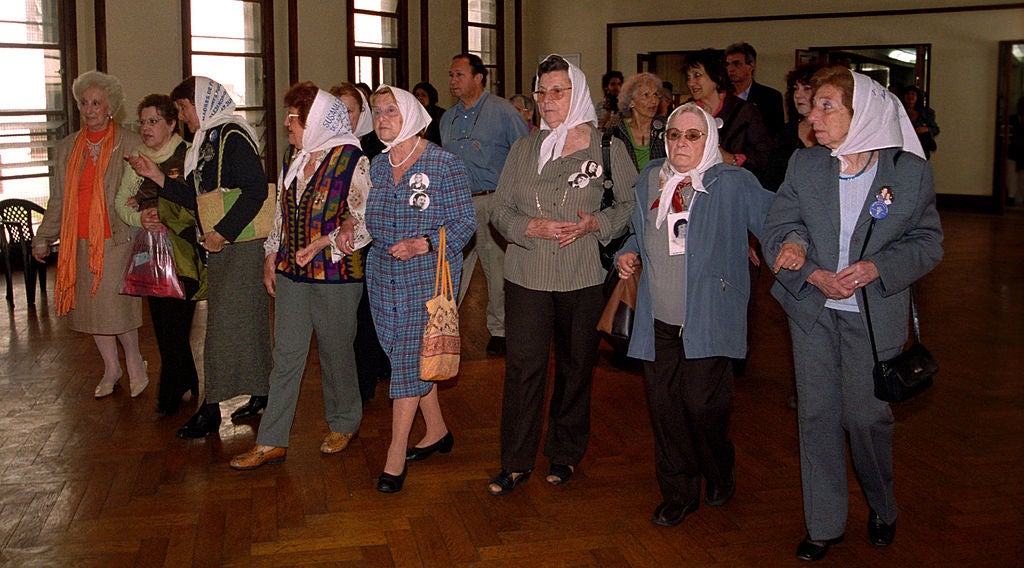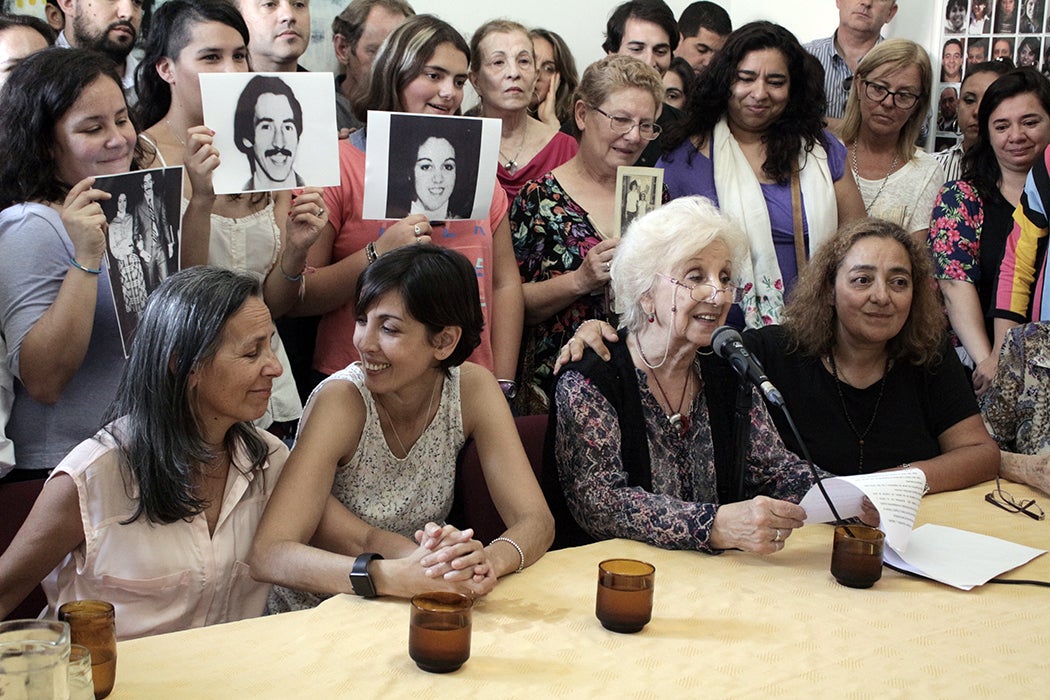Forty years ago, a baby was stolen from her imprisoned mother in Argentina. The military junta ruling the country tortured and murdered both her parents. Then they gave the baby to loyal supporters of the regime. This month, forty-year-old Adriana discovered who she was actually related to via DNA and the tireless efforts of the Grandmothers of the Plaza de Mayo. She is the 126th of some 500 state-kidnapped children to discover the truth of her birth and the horror of what the junta did to her parents.
During the junta’s “Dirty War” between 1976 and 1983, some 30,000 Argentines, the majority between 16 and 35 years old, were “disappeared.” The junta aimed to remove an entire generation of “subversives.” The bodies of most have never been recovered because they were buried, blown-up, or dropped into the sea. Those victims with children were punished generationally: the regime wanted their children to know nothing of their parents and to grow up as part of the “family” of the fascist regime. Some of these kidnapped children were abandoned on the streets or dumped in orphanages; others were given as rewards to officials and loyal supporters of the generals (as in Adriana’s case).
The Abuelas boldly started protesting in Buenos Aires in 1977. They were first known as “Las Locas de Plaza de Mayo.” Some of these “Crazy Ladies” had both children and grandchildren taken by the state. They have never let up.

Over the years, they have teamed up with forensic anthropologists to identify remains, and to tell if pregnant women had been murdered by the junta before or after giving birth. They helped set up a national genetic data bank of relatives of the disappeared, so that even after their relatives’ death, the kidnapped children (now all adults of course) would still be able to discover their origins. They were behind a major media campaign to reach the young, asking “Vos sabes quien sos?” (Do you know who you are?). Projects like Tango/Graphic Arts/Music/Theater/Architecture for Identity also helped spread the word.
Want more stories like this one?
As Rita Arditti, who has profiled the Grandmothers in a book, writes, their long effort to restore the truth “led to the conceptualization of a new human right to identity. Incorporated into international human rights legislation as Article 8 of the United Nations Convention on the Rights of the Child, it requires states to respect the right of children to preserve their identities and to take action to restore them if they have been destroyed.” (The US helped draft this 1990 Convention, but it was never ratified by the US Senate.)
After the fall of the junta in 1983, Argentina made some efforts at criminal prosecution. But these quickly faded as the perpetrators and their allies threatened the fragile democracy. Amnesty was granted. Those generals who had been convicted were pardoned. Yet, as Arditti notes, the “work of the Grandmothers can be summarized in one phrase: ‘No impunity for human rights atrocities.'” They dig right down into the genes to get at the truth.
Yet less than half of the number of stolen children have ever been found.
Editor’s Note: An earlier version of this article used the phrase “truth and reconciliation” to describe the Argentinian government’s efforts. It has been removed to more accurately reflect the government’s actions. In addition, the year 1982 was changed to 1983. Though the fall of the junta began in 1982, presidential elections weren’t held until December 1983.







